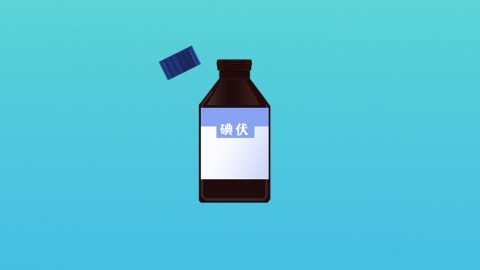What skin conditions is povidone-iodine suitable for?
Generally, povidone-iodine is suitable for skin abrasions, burns, athlete's foot, boils, folliculitis, and other skin conditions. If any abnormalities occur, prompt medical attention is recommended. Detailed explanations are as follows:

1. Skin Abrasions: The skin surface may become damaged after abrasions, making it susceptible to bacterial and microbial infections. Povidone-iodine can kill common pathogens such as Staphylococcus aureus and Escherichia coli on the skin surface, preventing infections and reducing the likelihood of wound suppuration.
2. Skin Burns: After burns, povidone-iodine can be used for wound disinfection. It effectively reduces bacterial growth on the burn wound, lowers the risk of infection, and promotes wound healing. However, povidone-iodine is more suitable for mild burns; it may not be appropriate for moderate to severe burns.
3. Athlete's Foot: Povidone-iodine may help alleviate mild inflammation and skin damage caused by athlete's foot, thereby reducing the risk of bacterial infection to some extent. However, it cannot thoroughly eliminate the fungi causing athlete's foot and cannot resolve the underlying issue.
4. Boils: Povidone-iodine can be used as an adjunctive treatment for boils. Boils are typically caused by Staphylococcus aureus infection, resulting in acute suppurative inflammation of the skin. Povidone-iodine has broad-spectrum antimicrobial properties that can kill bacteria and other pathogens, inhibit their growth, and alleviate localized symptoms such as redness and pain.
5. Folliculitis: Povidone-iodine also has some therapeutic effect on folliculitis. Folliculitis is often caused by bacterial infection; appropriate application of povidone-iodine can reduce bacterial numbers and relieve symptoms. However, it should be used in moderation to avoid skin irritation.
When using povidone-iodine, it is important to follow medical advice and avoid indiscriminate self-medication. Additionally, maintaining cleanliness and dryness of the affected area while avoiding contact with irritants is essential for promoting skin recovery.




